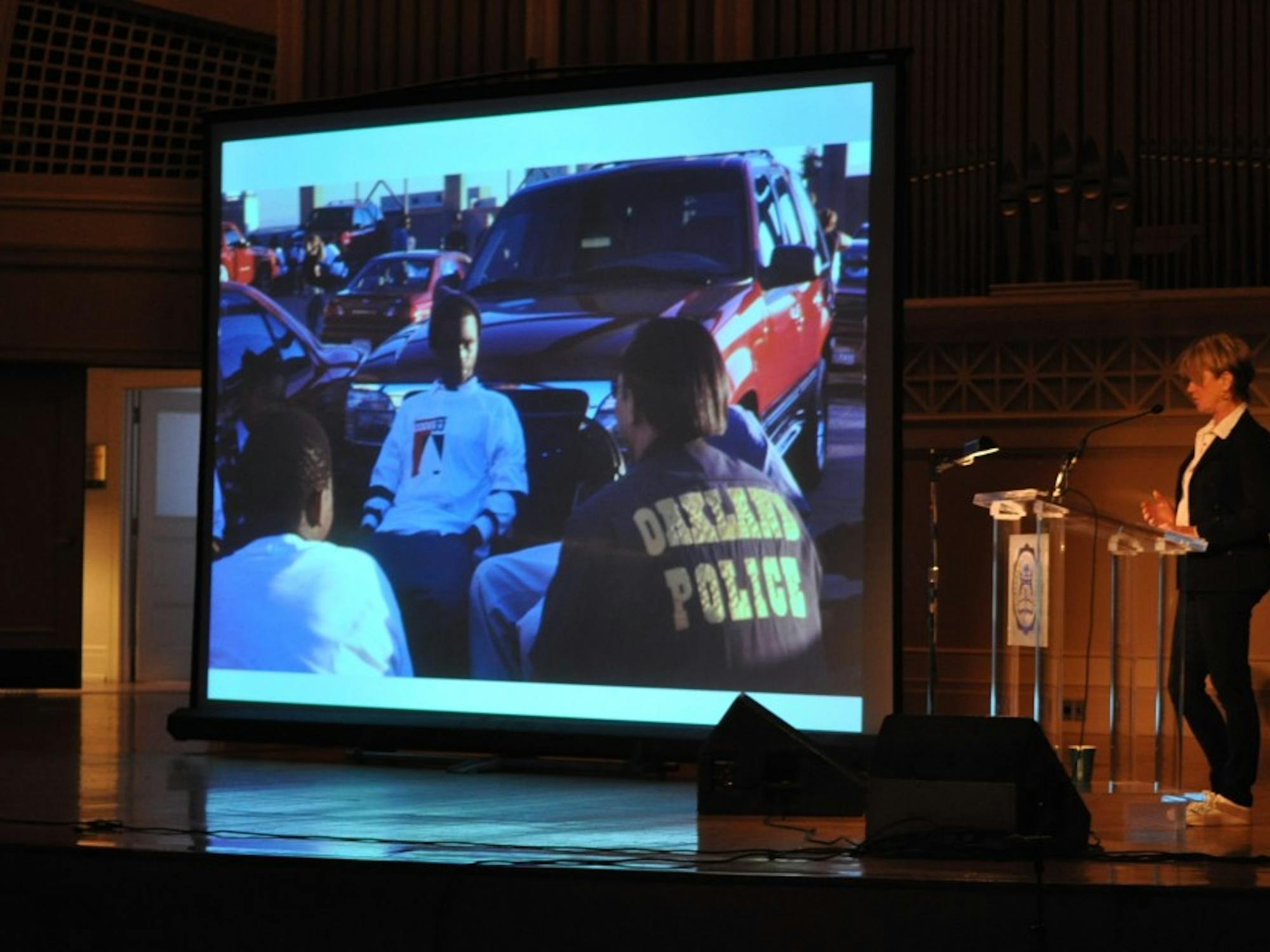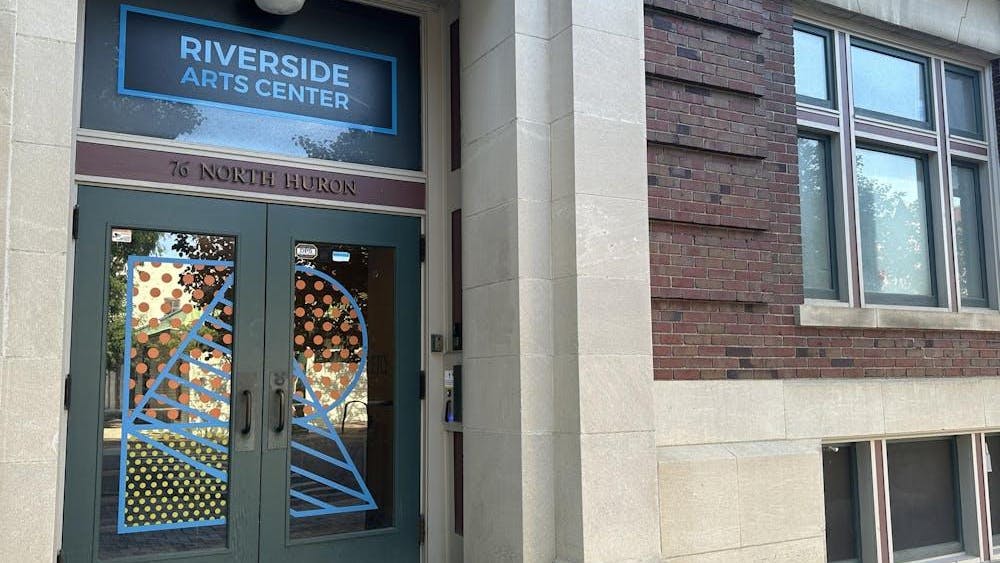Suzanne Lacy spoke as the last of Eastern Michigan University’s Porter Chair Speaker Series on April 12.
Nicole Carter, a Ph.D. in Educational Studies, said the talk asked students to “consider the relationship between art and activism and the role art plays in that transformation.”
For 10 years, Lacy worked in Oakland, Calif. on a series of classes and performances trying to highlight and change violence and exploitation of urban youth in Oakland and throughout the U.S.
Lacy said a culture was being built in the U.S. at the expense of youth.
“A culture of youth resistance with media images of hip-hop and gangster rap reflected majority culture stereotypes of inner-city youth including rampant sexuality, the abuse of women, and use of drugs,” Lacy said. “A newly violent or criminal behavior became a model of rebellion for a generation of young men growing up without fathers. It was, of course, adults who profited from this media industry.”
Lacy discussed four major projects she engaged in with the Oakland community and showed video footage of the performances that were done at the end of each program after discussing each project in detail.
The first project, “The Roof is on Fire,” started with two high school classes down the block from Lacy‘s workplace, the California School of Arts and Crafts. Lacy and a colleague requested doing a media literacy course with students once a week for a year, culminating in a performance with students discussing safe schools, sexuality, police and family. They later scaled up the project to include eight schools in Oakland.
The second project, “Eye 2 Eye” focused on problems with lack of student engagement and ineffective faculty. Another series of classes and a performance where teachers and school employees including the superintendent of Oakland schools could talk about these issues were held.
Lacy moved on to political activism, working with the Oakland city council to produce a youth policy, to highlight the youth policy vote and the issues surrounding it, which would have to be voted on. Lacy and other activists held a basketball game between police and Oakland youth, the rules changing each quarter.
The gymnasium where the event was held had discussions and questions on the walls created by students and volunteer police. At the end of the event, there was a discussion between the participating police and local youth. The Oakland youth policy passed.
The last project discussed was “Code 33,” which included more than just volunteer police officers, and the discussions with students were much more lively, if not contentious.
Caroline Sanders, a Ph.D. in Educational Studies doesn’t think the ideas Lacy presented were foreign to her, she considers herself an activist, but she thinks Lacy has opened new opportunities in expression.
“I though her projects were interesting in terms of how she coordinated and carried them out,” Sanders said.
As to the impact she’s made on Oakland, Lacy says she is in constant contact with participants in her projects, but institutional change is a “different animal.”
“Oakland continues, and my relationship with it continues,” Lacy said.








